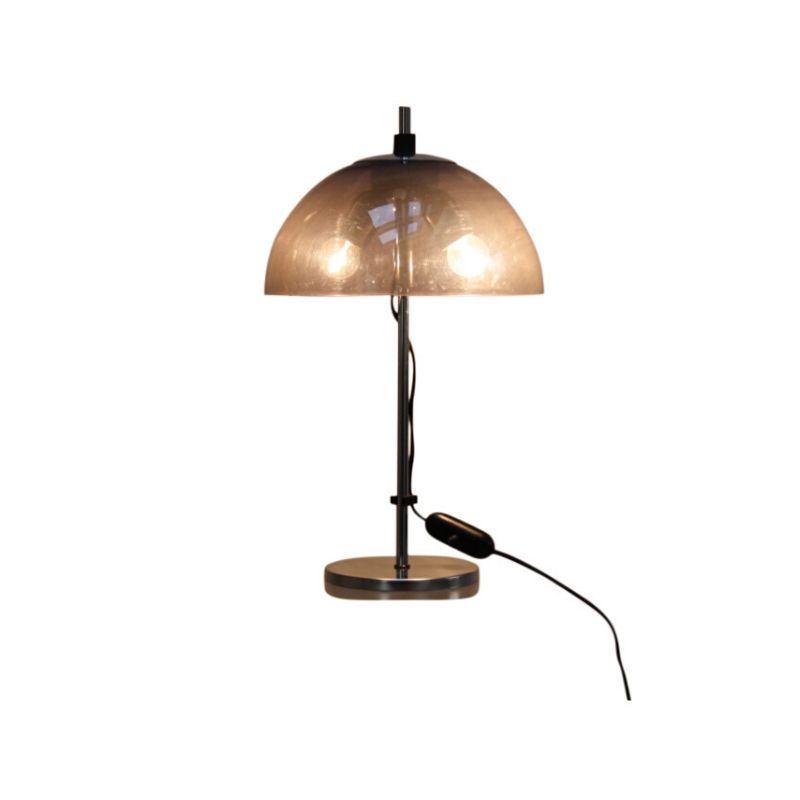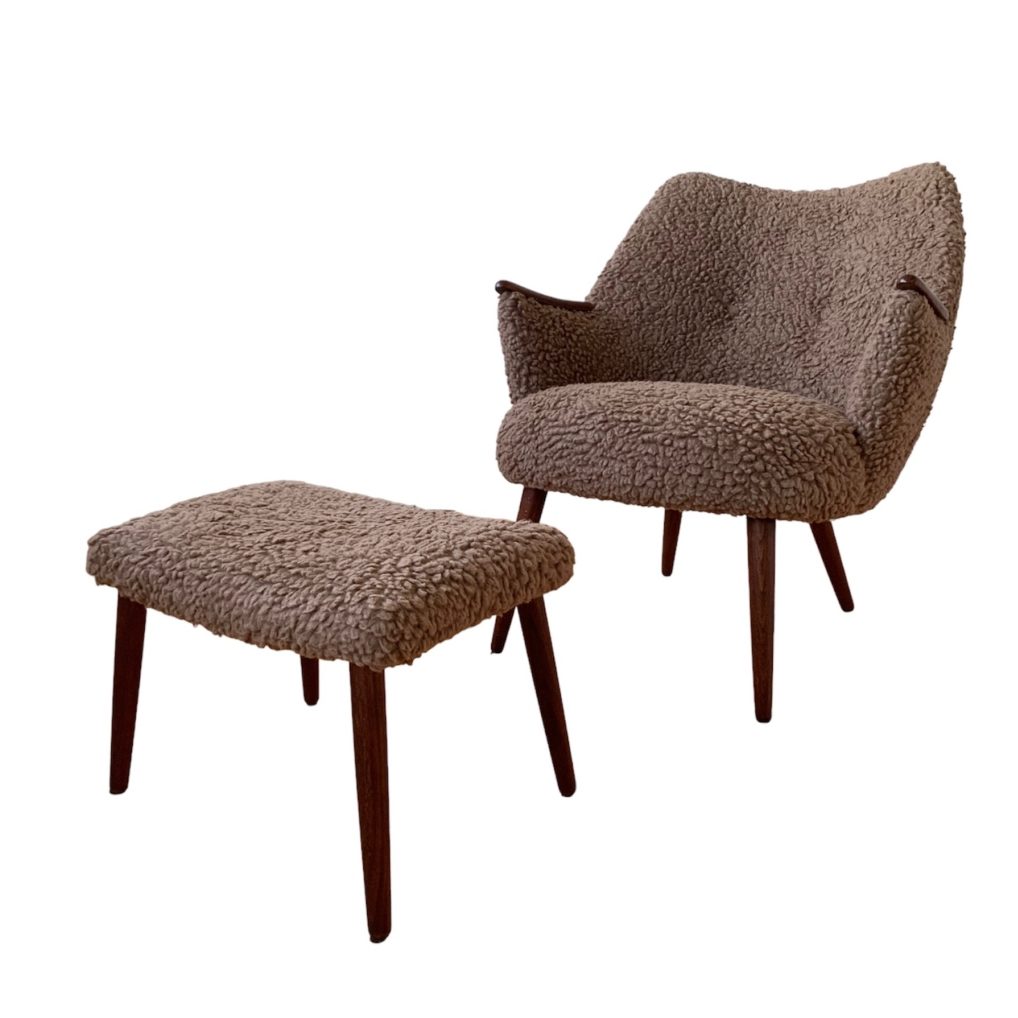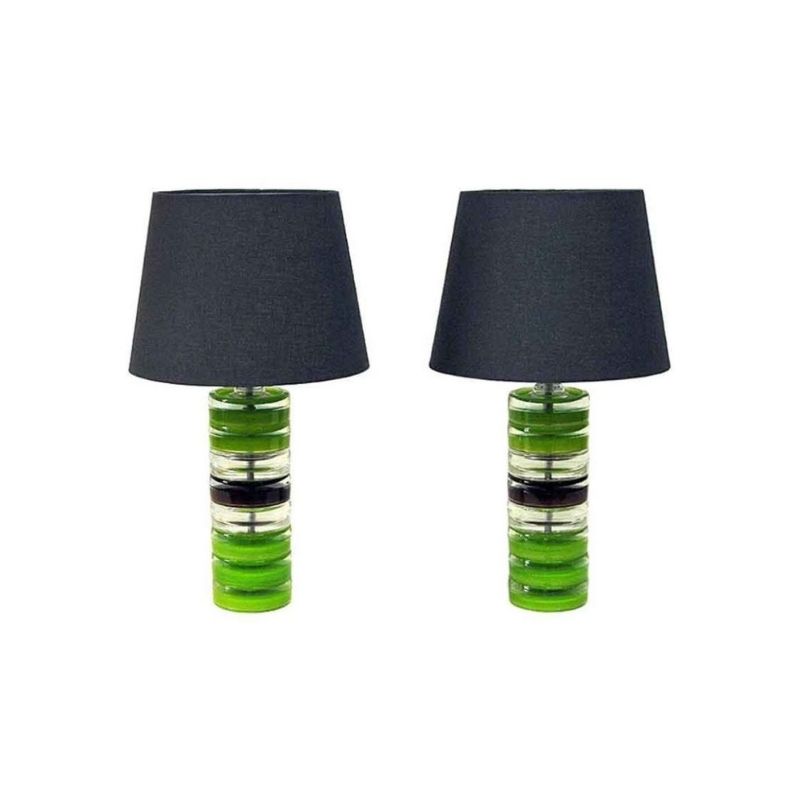Hi,
I've read on the site of a upholstering pro that standard Danish cushions height was supposed to be 3 inches foam (or flat cotton pad) whereas a 4 inches foam is more common nowadays.
Can anyone confirm ?
I may grab a sofa like above, but in any case, the frame will come empty and I'll have to upholster completely.
On the same model, if you compare the two upholstering, the second imho, somehow kill the design.
I can't really decide if its due to :
- the cushion height (the orange one seems higher to me, but it might be an optical effect)
- the fabric colour (maybe the orange is too heavy looking as opposed to the elegant white)
- the shape of the cushion
Any documented thoughts and advices appreciated,
Thanks 

The top ones look like maybe 2.5" or
maybe 3" thick but it's hard to compare since they have rounded edges.
The orange cushions look like 3.5" or so.
It depends on the look you want, the comfort level of the foam over the webbing on your chair and against whatever the back is---dowels, rattan, or an open space even.
I usually tend to do 3" on the seats and 2" on the backs. I think chairs with the same thickness on the back and seat look top heavy.
You should adhere polyester upholstery batting to the foam to keep fabric covers from gripping and creeping and ending up with creases from peoples' behinds. This batting adds a little bit of thickness to the cushion, too.
I always try two or three different densities of foam on the seat and back to see which feels best with that particular chair's parts. It can vary quite a bit. Thickness can change the feel of the density a lot, too---3" firm foam will feel very different than 2" firm foam.
And lastly, the foam for the back cushions should almost always be one or two levels less dense than the seat foam. If they're the same, the back will feel too firm. People screw that one up all the time.
Thanks a ton Spanky !
Here's what I can add regarding this upholstery project.
The frame will probably consist, as shown on the photo below,
- On the seat : of intercrossed elasbelt attached to the wood frame with dowels (but probably with more range of elasbelt than on the photo,
- On the back : interspaced wood pieces for the back.
The 3 and 2.5 foam thickness you gave me seems pretty accurate to me, but would you maintain them now you know the kind of framing, and also the following ?
1 - As for foam, here's what my supplier have :
- Seating foam density : I can choose between 35 kg by square meter (medium) and 40kg by square meter (firm)
- Back foam density : I can choose between 23 kg by square meter (soft), 26 (medium) and 30 (firm) 35 (very firm)
2 - As for the feeling, I'm looking for something not too firm (but I don't want to destroy my back either!). I would say the closest sensation of comfort I could link to is the famous Ikea Poang
3 - And also, I didn't know about the polyester wadding trick. The fabric supplier simply advised me to wrap and sew the foam with an intermediate cotton sheet, in order to make it easier to take the fabric off whenever it needs to go to the cleaning machine.
You final advices would be much appreciated
cheers
cadodream
I really couldn't say what density you should get, sorry! I have a range of foams on hand and I just try different ones until it feels right. Could you take your chair frame to the upholsterer and do this? The foam doesn't have to be cut to size first. I just stick an end of the long slab on the seat and let the rest drape over the edge (or back).
There are different measurements for density---weight, as you mentioned, but also ILD, or maybe that's for resilience. I find all that rather confusing so I just go by how it feels.
If you do thicker foam on the back---like 3" on the back and 4" on the seat, which is a perfectly acceptable look---then you probably won't feel the back slats through the soft density foam. That's all the foam is for, to add padding between you and the slats. It's not for support because the slats provide that.
The seat foam depends more on how taut the webbing is. That can vary significantly. You really should try to test different ones if you are picky (and there's nothing wrong with picky--I'm very, very picky myself).
Heath--I think you're asking about the difference between polyurethane foam and latex foam. Good quality polyurethane foam will last up to 15 years and I think denser foam wears better than softer foam. But density isn't the only factor; quality matters, too. In the US there is a chain store called Joann Fabrics that sells a lot of upholstery foam and it is pretty poor quality but also quite a bit more expensive than the much better stuff I get from my local upholstery supplier, so go figure. Even when it's 50% off, it costs more. Ridiculous! You can feel the difference in quality just touching it.
Latex foam, on the other hand, lasts longer but I think the main difference to consider is that it feels really different. It's more resilient. It's rubbery. I would use nothing but latex if I could (or mostly latex) but it's prohibitively expensive and I have not been real happy with the range of densities that I've found so far---doesn't seem to be a lot of difference.
Latex foam doesn't develop hollows over time, or shouldn't, whereas even the best quality polyurethane foam will.
heath
OOPS, just reread your question--I kind of think that the polyurethane foam today is better than the stuff of 30-40 years ago. But I don't really know. It just stands to reason that they'd know how to make it better today than back then when the industry was new.
But yeah, denser will probably hold up better than less dense. But in the end you should go with what feels best. Foam blocks inside cushion covers are really, really easy to replace when they start to break down.
oh, about the batting---
Sorry, forgot to answer that one, cadodreams. Batting adds just a little bit of softness to the look of the cushion. A foam block with no batting will look very square and crisp-edged. And yes, if that's the look you want, definitely cover it first in muslin sheeting and be sure not to have any excess bulk at the seams because it could show through.
The muslin will make it easier to get the covers on, but more importantly it will keep the foam from gripping the upholstery fabric when someone slides forward to get up from the chair. The fabric will slide with them and the foam will grip it in place and you'll get unsightly wrinkles which will eventually become permanent creases.
Of course, the muslin could also do this, I guess. I have used muslin but I've glued it to the foam with spray adhesive.
But usually I use upholstery batting, also gluing it to the foam to keep it in place. One layer of 1/2" batting adds just enough softness to the look but still keeps the square edged look that I want. It also lets the bulk of the seam allowances something to settle into so that they aren't as noticeable on the outside (telegraphing through).
.
Thanks so much, I found some technical articles and it looks like a 15-20 year usable lifespan but I'm sure I've come across foam in chairs that is 30+ and doing fine. I suppose it depends on their criteria for usability, for me its when it goes crunchy but perhaps they determine it by a loss of resilience or minor decay.
Either way in comparison to hardwood framed seating with loose cushions those blocky foam sofas so common now seem to have such a short life span its hard to imagine anyone ever taking real care of them or bothering to have them refoamed, it would probably cost more than was paid for it.
OK, yeah--
you're talking about latex foam if you mean the stuff that gets crunchy hard. I've seen 60-year-old latex foam that was ok because it was encased in vinyl the whole time, but I don't know if it had a really short shelf life once it exposed to air after that. I suspect that it did.
Polyurethane foam gets softer with age and eventually gets crumbly but they are soft crumbs. If you rub it, it will crumble. It's a very different animal than latex foam.
Spanky
I'll probably have no opportunity to test different foams. When the frame will be delivered to my tiny flat, cushions must be ready and I'll have to get rid of my old sofa instantly. Besides, I have no car and the best quality/price suppliers I have at hand are online websites. So...
But enough tears !
Reading to your advices, here's what I plan to do :
3" for the seat (High density+ medium comfort) + glued 1/2" batting
2" for the back (with a medium density so I won't feel the wood in my back) + glued 1/2" batting.
But if I understand correctly what you told me about the batting, I don't really see why, I should, in addition, wrap the whole thing in an intermediate raw fabric (the cotton sheet I mentioned earlier) before I put the final fabric.
My understanding is that its either intermediate fabric or batting.
But as I will use batting...
Cheers, and thanks again
You don't have to use the
muslin covers over the batting, but you might want to put the whole batting/foam cushion into a large, thin trash bag before slipping the new cover on. It will be much easier to do and then you can just reach inside and tear away the plastic and pull it out.
If you need any help, please contact us at – info@designaddict.com









